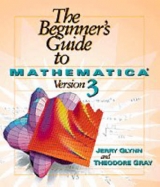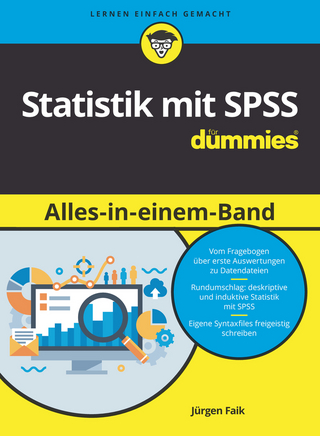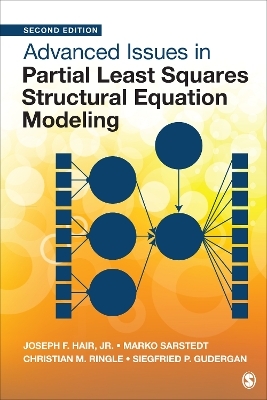
The Beginner's Guide to Mathematica ® Version 3
Cambridge University Press (Verlag)
978-0-521-62202-8 (ISBN)
- Titel erscheint in neuer Auflage
- Artikel merken
This revision of the successful textbook The Beginner's Guide to Mathematica teaches new Mathematica users some of the important basics of the latest release of this powerful software tool: these include using the typesetting features, programming palettes, defining functions, creating graphs and notebooks, and applying useful problem solving techniques. Using their skills as Mathematica experts and teachers, the authors provide a brisk but careful tutorial for the Mathematica novice. From the fundamentals of installing and running Mathematica on your computer, through to tips on how to get the most from the advanced programming features, the presentation maintains its concise and knowledgeable tone, providing indexes for both concepts and Mathematica function names. This book will be a valuable tool for both students and individual Mathematica users.
Preface; Part I. The Basics: 1.1 What do I need to make Mathematica work on my computer?; 1.2 How do I start Mathematica?; 1.3 Can I read the rest of this book without reading this chapter?; 1.4 What's the difference between numerical and symbolic calculation?; 1.5 How do I ask Mathematica for help?; 1.6 How do I define constants and functions?; 1.7 What's a package and how do I load it?; 1.8 What packages have you got?; 1.9 Why didn't it work when I tried to load a package?; Part II. Using Mathematical Notation: 2.1 Can I use Mathematica without learning any new notation?; 2.2 How do I use palettes to do Math?; 2.3 How do I enter Úπ0 (1/(1 - m sin2(q)))dq) without using the keyboard?; 2.4 How do I enter Úπ0 (1/(1 - m sin2(q)))dq) really quickly?; Part III. Lists, Tables, Vectors, And Matrices: 3.1 What are lists and what can I do with them?; 3.2 How do I enter $/matrix{a&b// c&d}$?; 3.3 How do I make a table of values?; 3.4 How do I manipulate vectors and matrices? Part IV. Numerical Calculations: 4.1 What's the difference between 2 and 2.?; 4.2 How do I do big numerical calculations?; Part V. Algebra: 5.1 How do I manipulate polynomials?; 5.2 How do I solve equations?; 5.3 How do I use complex numbers?; 5.4 How do I learn something with Mathematica?; Part VI. Calculus: 6.1 How do I integrate and differentiate?; 6.2 How do I find limits?; 6.3 How do I solve differential equations?; Part VII. Two Dimensional Plotting: 7.1 How do I plot a function in two dimensions?; 7.2 How do I plot parametric equations in two dimensions?; 7.3 How do I plot in polar coordinates?; 7.4 How do I plot implicitly defined functions?; 7.5 How do I show the area between curves? Part VIII. Three Dimensional Plotting: 8.1 How do I plot a function in three dimensions?; 8.2 How do I plot a parametric equation in three dimensions?; 8.3 How do I plot in cylindrical and spherical coordinates? Part IX. Other Graphics And Sounds: 9.1 How do I make contour and density plots?; 9.2 How do I plot a list of values?; 9.3 How do I make sounds?; 9.4 How do I make animations?; Part X. Notebooks: 10.1 How do I use Mathematica as a word processor?; 10.2 How do I use Mathematica as an outliner?; 10.3 How do I use Mathematica to write books, papers, and reports? 10.4 How do I give my friend a notebook if he has one of those other computers? 10.5 Is Mathematica 'scriptable'?; Part XI. Mathematica and the Internet: 11. 1. Does this book have a home page?; 11.2 What Mathematica resources are available on the Web?; Part XII. Statistics And Data Analysis: 12.1 How do I do statistics?; 12.2 How do I fit a curve to data?; Part XIII. Programming: 13.1 How do I program in Mathematica?; 13.2 Should I ever use a for loop?; 13.3 How do I use patterns?
| Erscheint lt. Verlag | 28.9.1997 |
|---|---|
| Verlagsort | Cambridge |
| Sprache | englisch |
| Maße | 203 x 236 mm |
| Gewicht | 840 g |
| Themenwelt | Mathematik / Informatik ► Informatik |
| Mathematik / Informatik ► Mathematik ► Computerprogramme / Computeralgebra | |
| ISBN-10 | 0-521-62202-6 / 0521622026 |
| ISBN-13 | 978-0-521-62202-8 / 9780521622028 |
| Zustand | Neuware |
| Informationen gemäß Produktsicherheitsverordnung (GPSR) | |
| Haben Sie eine Frage zum Produkt? |
aus dem Bereich



